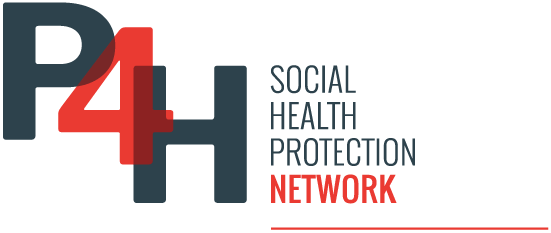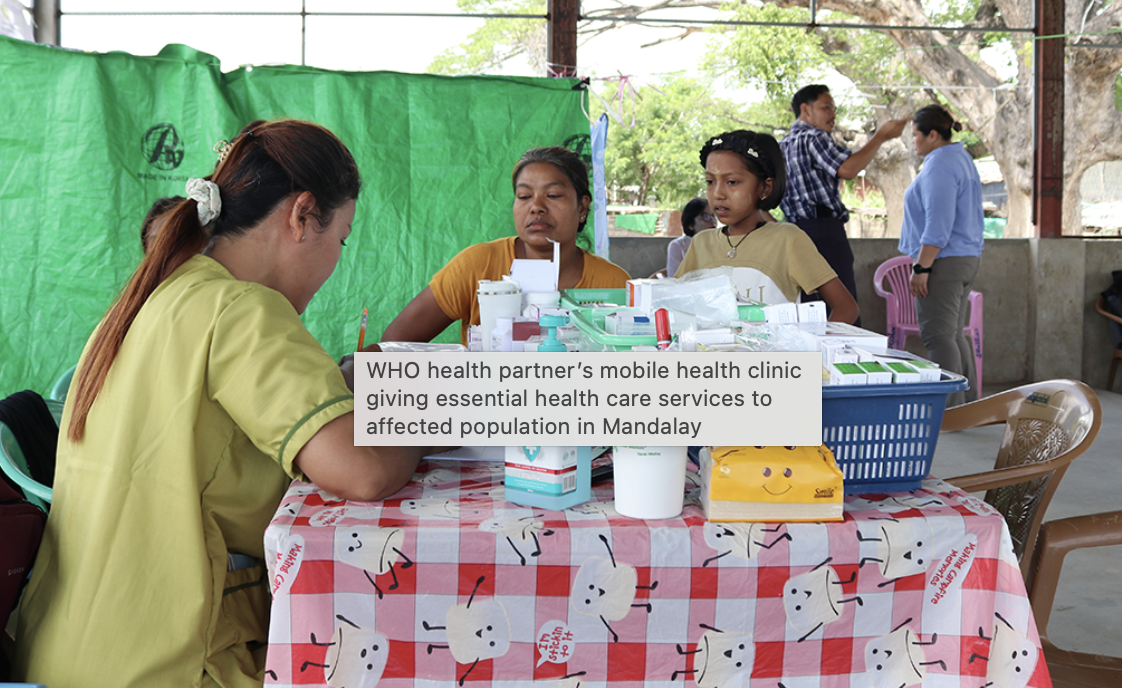The March 2025 earthquakes in Myanmar devastated health services, overwhelming facilities and leaving thousands in urgent need of care. With rapid, flexible support from the WHO’s Contingency Fund for Emergencies, critical health supplies, disease prevention measures, and psychosocial support were swiftly delivered, reaching the most vulnerable and helping stabilize the crisis.
In March 2025, Myanmar was struck by two powerful earthquakes that left a trail of destruction across several regions. The impact on the country’s already fragile health system was profound. Hospitals and clinics collapsed, medical supplies were buried under debris, and health workers faced an overwhelming surge in demand for urgent care. The disaster exposed and intensified existing vulnerabilities, with thousands of people suddenly requiring treatment for trauma injuries, chronic illnesses, reproductive health needs, and disease prevention.
The World Health Organization (WHO), with crucial support from the Contingency Fund for Emergencies (CFE), acted swiftly in the aftermath. Within 24 hours, WHO deployed emergency health supplies via charter flights, including Interagency Emergency Health Kits, trauma and surgical kits, mobile tents, blood safety sets, and body bags. These resources were distributed to public health facilities treating earthquake survivors. The rapid response was vital in sustaining essential care and saving lives during the critical early days following the earthquakes.
One of the most impactful interventions was the distribution of 1,400 Mother and Baby Packs across 20 severely affected townships. These packs ensured that over 2,800 mothers and newborns received safer childbirth support and dignified care, even in temporary shelters. In anticipation of the monsoon season and the increased risk of disease in overcrowded camps, WHO also prioritized disease prevention. Outbreak response kits, laboratory reagents, and rapid diagnostic tests were pre-positioned to boost early detection of infectious diseases. Water filters were installed at health facilities and displacement sites, providing clean drinking water for more than 13,500 people each month and directly supporting efforts to prevent waterborne diseases such as acute watery diarrhoea and cholera.
Beyond emergency trauma care, WHO addressed the needs of those with chronic illnesses and disabilities by supplying three months’ worth of medications for over 25,000 people living with hypertension and diabetes. Additionally, 1,500 assistive devices were distributed to help individuals with mobility challenges recover with dignity. Recognizing the psychological toll of the disaster, WHO scaled up mental health support by procuring mental health kits and training over 450 health workers in Psychological First Aid (PFA) and self-care. These efforts reached more than 22,900 people, including both earthquake survivors and frontline health workers, equipping them with the knowledge and skills to manage stress, cope with trauma, and build resilience during the recovery process.
To ensure a coordinated and effective response, WHO, with CFE support, reinforced operational capacity across Myanmar by supporting Rapid Response Teams and Health Emergency Operations Centres. These platforms enabled targeted interventions and real-time response to evolving needs on the ground. The flexibility and timeliness of CFE funding were instrumental in allowing WHO and its partners to act quickly and efficiently, not only addressing urgent health needs but also strengthening community-level resilience and essential health services for the longer term.
The March 2025 earthquakes in Myanmar were a severe test for the country’s health system. Thanks to the rapid, flexible support from the Contingency Fund for Emergencies, WHO was able to deliver lifesaving care, disease prevention, and psychosocial support to thousands of people in need. The response demonstrated the importance of emergency preparedness and highlighted the ongoing need for coordinated humanitarian assistance to protect the health and dignity of vulnerable communities in times of crisis.


